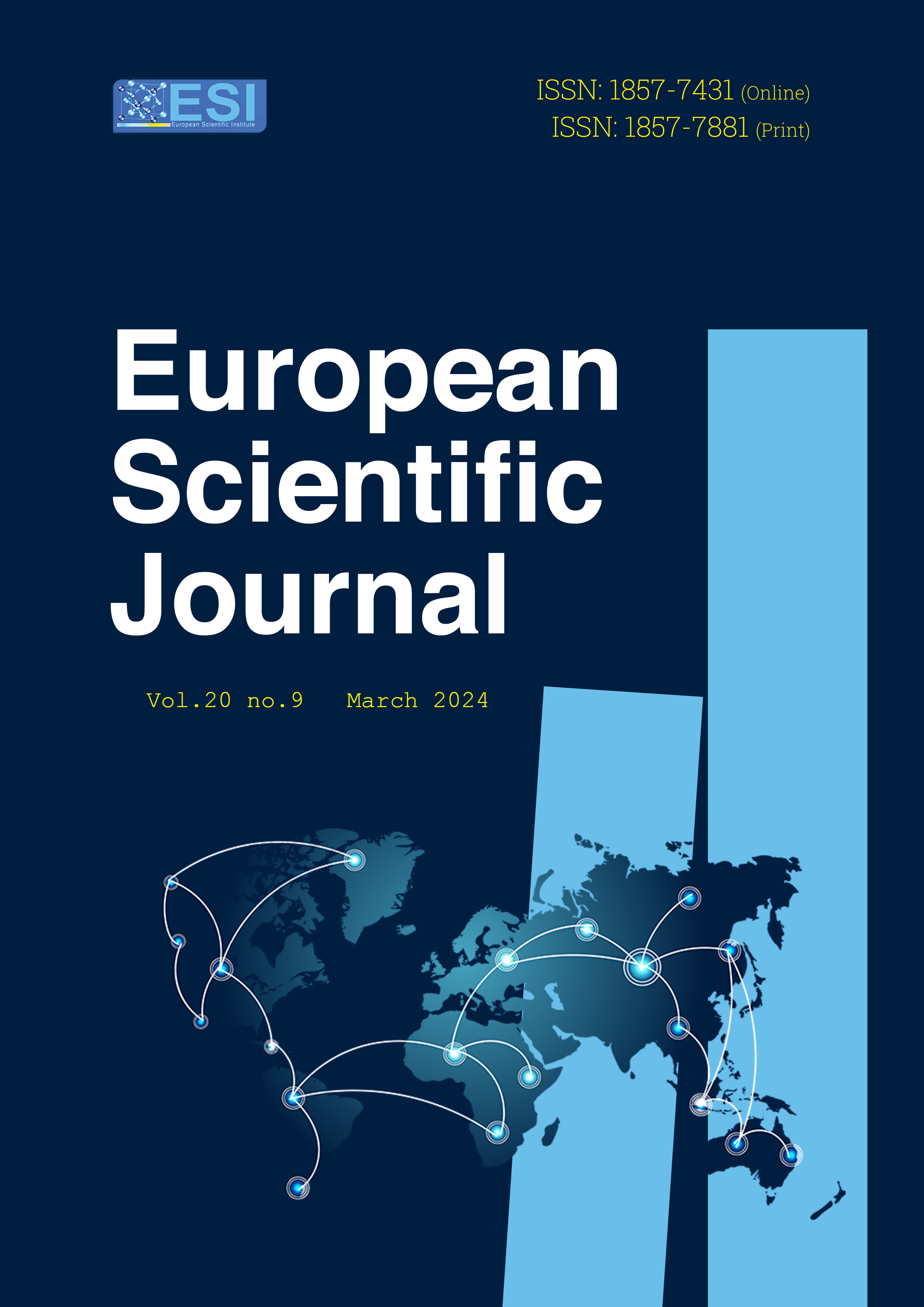The Philosophy of Probability Value Behavior: Fractions and Composite Probability Functions in the Continuous Case
Abstract
This paper focuses on probability value behavior in the case of continuous sample space by employing fractions intervals and composite functions. The study evaluates value behavior rather than finding values directly, which involves utilization of some concepts from continuity, geometric probability, and measure theory. This paper primarily uses an experiment that contains two major events, head H and tail T, in all their occurrence phases. This spread in infinite and uncountable fractions by a continuous motion within intervals and in the predominant circumstances where events are probabilistic values. As a result, every circumstance reflects many important characteristics of probability theory. Among the main results, this paper provides proven propositions that help design experiments upon understanding the case nature, with some explanations to the existing relation between probability value and the case nature. Also, this paper provides a proven corollary that allows visualizing negative probability values as a particular trial. This in turn proposes necessary uses for the composite probability function Pj (pi). Moreover, this paper provides numerical explanations of limits, which can demonstrate the nature of Pj (pi) alongside some techniques. Also, this paper considered conditional probability through some corollaries and the possibility of using the non-negative function of the interval i, alongside many important results in form of discussions.
Downloads
Metrics
PlumX Statistics
References
2. Blass, A. & Gurevich, Y. (2015). Negative probability. Bull Eur Assoc Theor Comput Sci. 115.
3. Botts, T. (1969). Probability Theory and the Lebesgue Integral. Mathematics Magazine, 42(3), 105–111. https://doi.org/10.2307/2689118
4. Cramér, H. (1946). Mathematical Methods of Statistics. First Printing. USA: Princeton University Press.
5. Davenport Wilbur, B. & Root William, L. (1958). An Introduction to the Theory of Random Signals and Noise. USA: McGraw Hill Book Company.
6. Eagle, A. (2005). Randomness Is Unpredictability. The British Journal for the Philosophy of Science, 56(4), 749–790. http://www.jstor.org/stable/3541866
7. Feller, W. (1950). An Introduction to Probability Theory and Its Applications, Volume I. New York, NY: John Wiley & Sons, Inc.
8. Feller, W. (1966). An Introduction to Probability Theory and Its Applications, Vol.2. Digital Library of India Item 2015.134183.
9. Feynman Richard, P. (1987). Negative probability. In Basil J. Hiley & D. Peat (eds.), Quantum Implications: Essays in Honour of David Bohm. Methuen. pp. 235--248.
10. Gnedenko, B.V. (1963). The Theory of Probability. Second Edition. USA: Chelsea Publishing Company.
11. Gnedenko, B.V. & Kolmogorov, A. N. (1968). Limit Distributions for Sums of Independent Random Variables. USA: Addison-Wesley Publishing Company.
12. Jughaiman, A. (2023). The Philosophy of Probability Values Behaviour through Fractions and Composite Probability Function for Independent Events in the Discrete Case. European Scientific Journal, ESJ, 19(18), 1. https://doi.org/10.19044/esj.2023.v19n18p1
13. Justicz, J., Scheinerman, E. R., & Winkler, P. M. (1990). Random Intervals. The American Mathematical Monthly, 97(10), 881–889. https://doi.org/10.2307/2324324
14. Kane Joseph, W. & Sternheim Morton, M. (1988). Physics. Third Edition. Singapore: John Wiley & Sons, Inc.
15. Keller, J. B. (1986). The Probability of Heads. The American Mathematical Monthly, 93(3), 191–197. https://doi.org/10.2307/2323340
16. Laning Halcombe Jr. & Battin Richard, H. (1956). Random Processes in Automatic Control. New York: McGraw-Hill Book Company, Inc.
17. Laplace, P.S. (1995). Théorie Analytique Des Probabilités. Quatrième & Troisième Édition. Paris: Éditions Jacques Gabay.
18. Lebesgue Henri (1989). Leçons sur L’intégration et La Recherche des Fonctions Primitives. Deuxième Édition. Paris: Éditions Jacques Gabay.
19. Lévy Paul (2006). Calcul Des Probabilités. Paris: Éditions Jacques Gabay.
20. Loève, M. (1977). Probability theory, Volume I. 4th Edition. New York: Springer-Verlag.
21. Loève, M. (1978). Probability theory, Volume II. 4th Edition. New York: Springer-Verlag.
22. Mcginty, M. (2004). Geometric Probability for The Space-Time Plane. Pi Mu Epsilon Journal, 12(1), 25–35. http://www.jstor.org/stable/24340793
23. Meyer, P. L. (1970). Introductory Probability and Statistical Applications. Second Edition. USA: Addison-Wesley Publishing Company, Inc.
24. Monticino, M. (2001). How to Construct a Random Probability Measure. International Statistical Review / Revue Internationale de Statistique, 69(1), 153–167. https://doi.org/10.2307/1403534
25. Parzen, E. (1960). Modern Probability Theory and Its Applications. New York, NY: John Wiley & Sons, Inc.
26. Rényi Alfréd (1970). Probability Theory. Amsterdam: Holden-Day and Akadémiai Kiadó.
27. Shiryaev Albert, N. (2016). Probability-1. Third Edition. New York: Springer.
28. Stoll Manfred (1997). Introduction to Real Analysis. Boston: Addison Wesley Longman Inc.
29. Sveshnikov, A.A. (Ed.).(1968). Problems in Probability Theory, Mathematical Statistics and Theory of Random Functions. USA: W. B. Saunders Company.
30. Swokowski Earl, W. (1988). Calculus with Analytic Geometry. Second Alternate Edition. USA: PWS-KENT Publishing Company.
31. Szekely Gabor, J. (2005). Half of a coin: Negative probabilities. Wilmott Magazine. 50. 66-68.
32. Tucker Howard, G. (1967). A Graduate Course in Probability. New York: Academic Press, Inc.
33. Uspensky, J.V. (1937). Introductions to Mathematical Probability. First Edition, Second Impression. New York: McGraw-Hill Book Company, Inc.
34. Velleman, D. J. (1997). Characterizing Continuity. The American Mathematical Monthly, 104(4), 318–322. https://doi.org/10.2307/2974580
Copyright (c) 2024 Abdulaziz Jughaiman

This work is licensed under a Creative Commons Attribution 4.0 International License.








